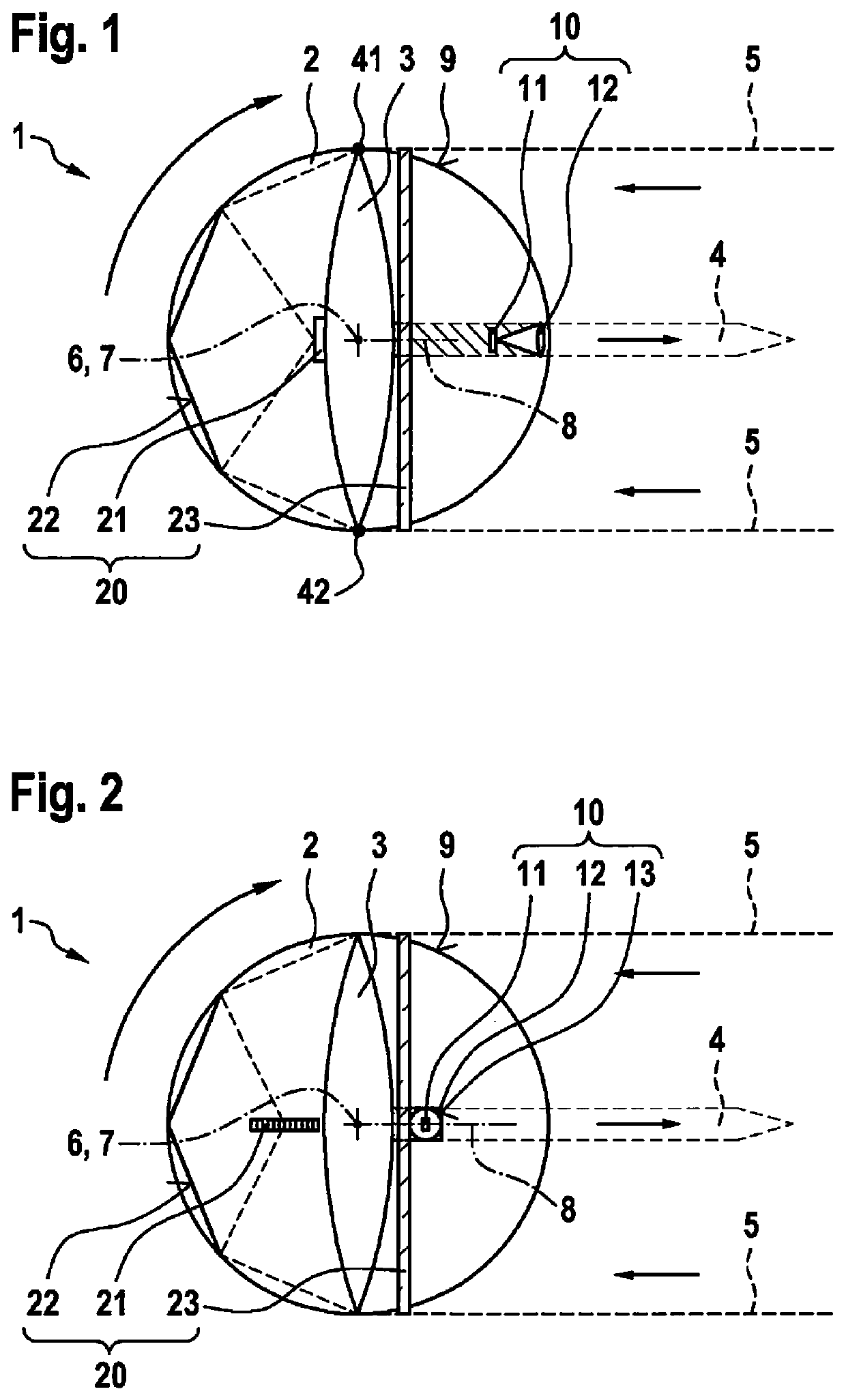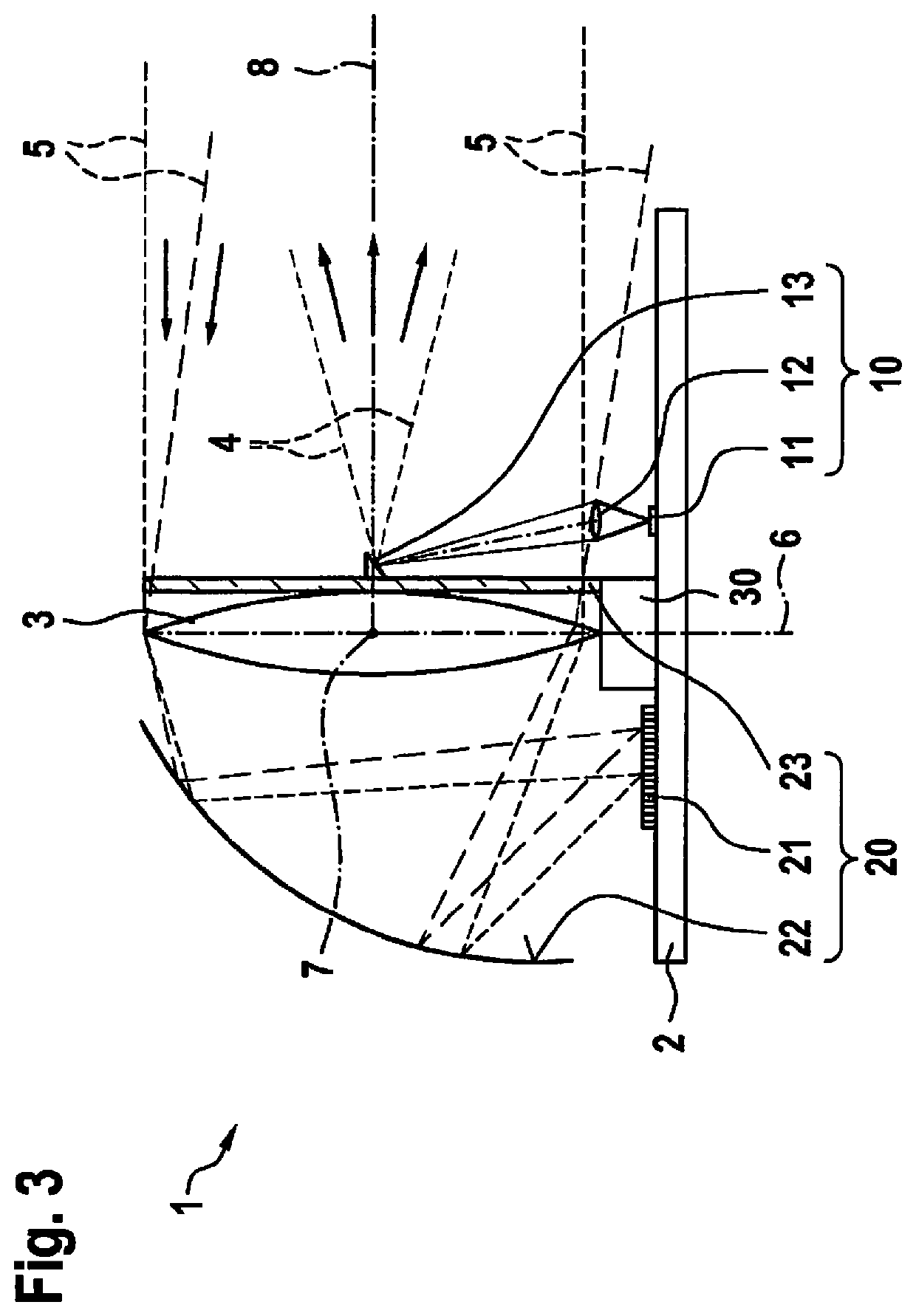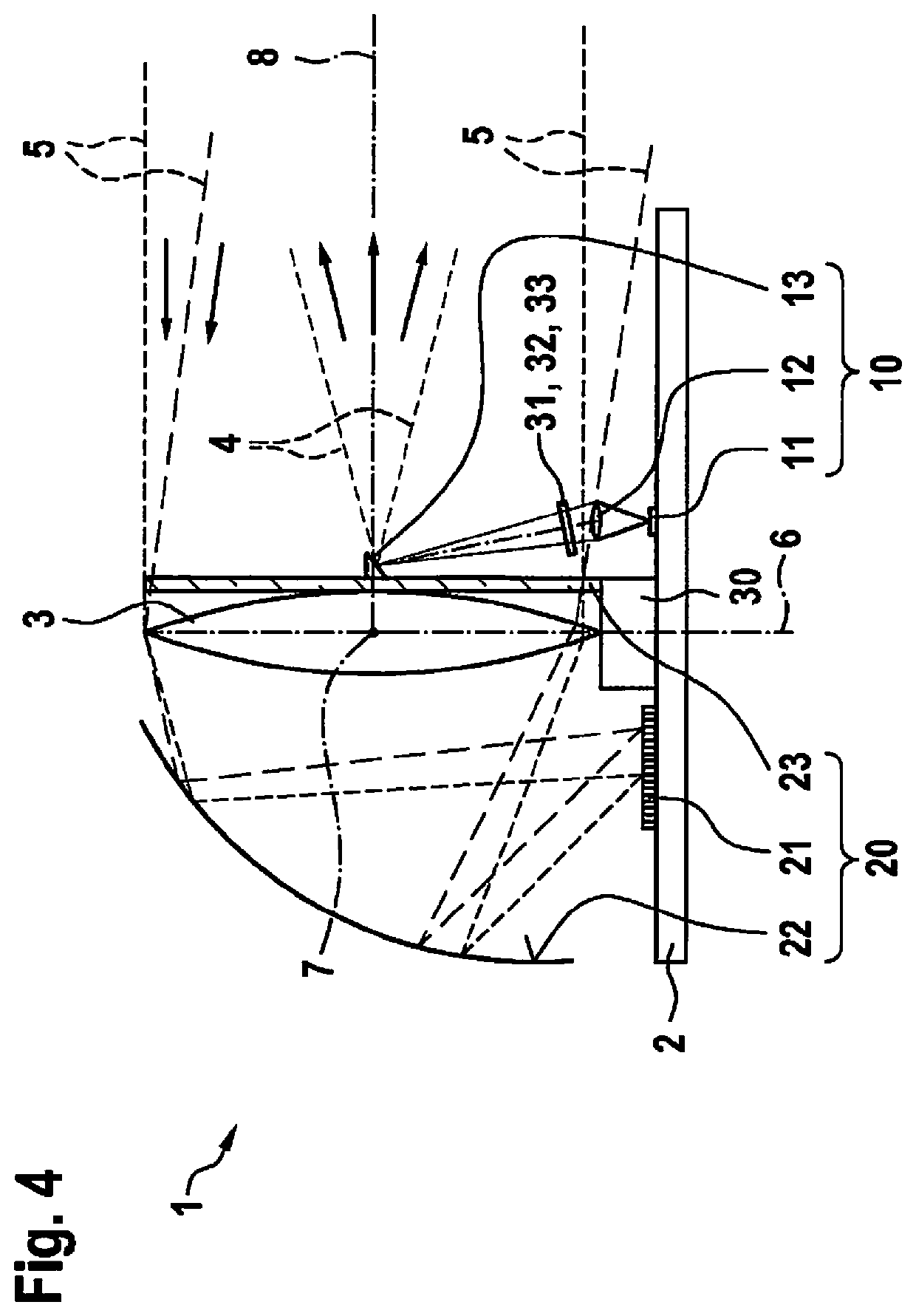Optical scanning system
a scanning system and optical scanning technology, applied in the field of optical scanning systems, can solve the problem that the transmission beam cannot be expanded, and achieve the effect of high degree of sensitivity of the optical scanning system, optical scanning, and convenient optimization
- Summary
- Abstract
- Description
- Claims
- Application Information
AI Technical Summary
Benefits of technology
Problems solved by technology
Method used
Image
Examples
Embodiment Construction
[0026]FIG. 1 shows an optical scanning system 1 according to a first specific embodiment of the present invention. Here, optical scanning system 1 is shown in a sectional image along a first sectional plane. An axis of rotation of the optical scanning system stands perpendicular to the depicted first sectional plane.
[0027]Optical scanning system 1 is a coaxial macroscanner. This means that a scanning beam 4 that is sent out by optical scanning system 1 has an axis that is parallel—in this first specific embodiment, identical—to that of a reflected scanning beam 5 that is received by optical scanning system 1. Optical scanning system 1 includes a rotor 2, an optical lens 3, an optical transmit unit 10, and an optical receive unit 20.
[0028]Rotor 2 is set up to rotate about an axis of rotation 6 during a scanning process. In this first specific embodiment of the present invention, rotor 2 is a circular disk and axis of rotation 6 stands perpendicular to a circular surface of rotor 2, r...
PUM
 Login to View More
Login to View More Abstract
Description
Claims
Application Information
 Login to View More
Login to View More - R&D
- Intellectual Property
- Life Sciences
- Materials
- Tech Scout
- Unparalleled Data Quality
- Higher Quality Content
- 60% Fewer Hallucinations
Browse by: Latest US Patents, China's latest patents, Technical Efficacy Thesaurus, Application Domain, Technology Topic, Popular Technical Reports.
© 2025 PatSnap. All rights reserved.Legal|Privacy policy|Modern Slavery Act Transparency Statement|Sitemap|About US| Contact US: help@patsnap.com



